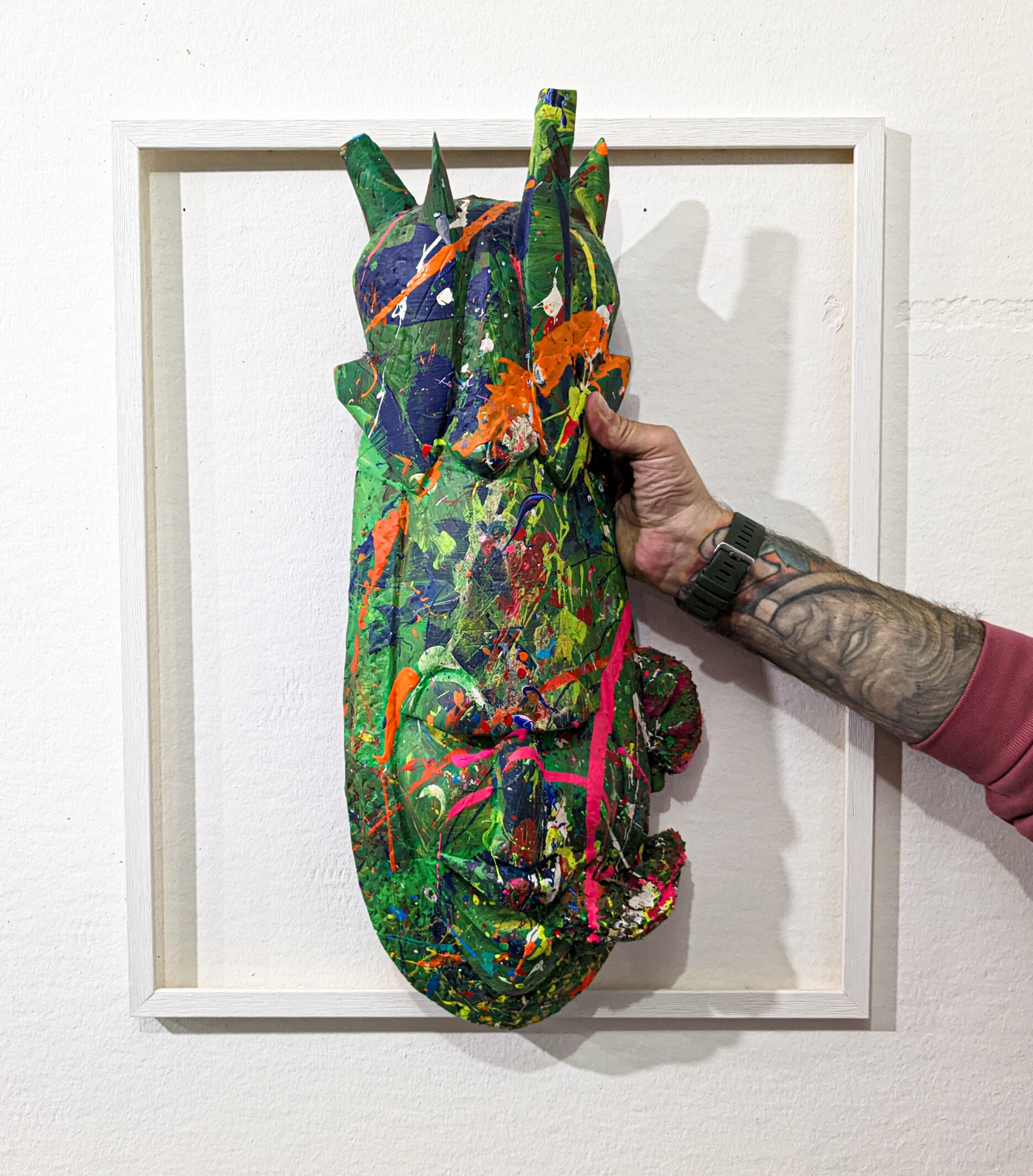— English Version below —
Können Traditionen vollkommen übernommen, angeeignet und gekapert werden, sodass sie in ihrer neuen Funktion absolut aufgehen? Appropiation / Elevatio
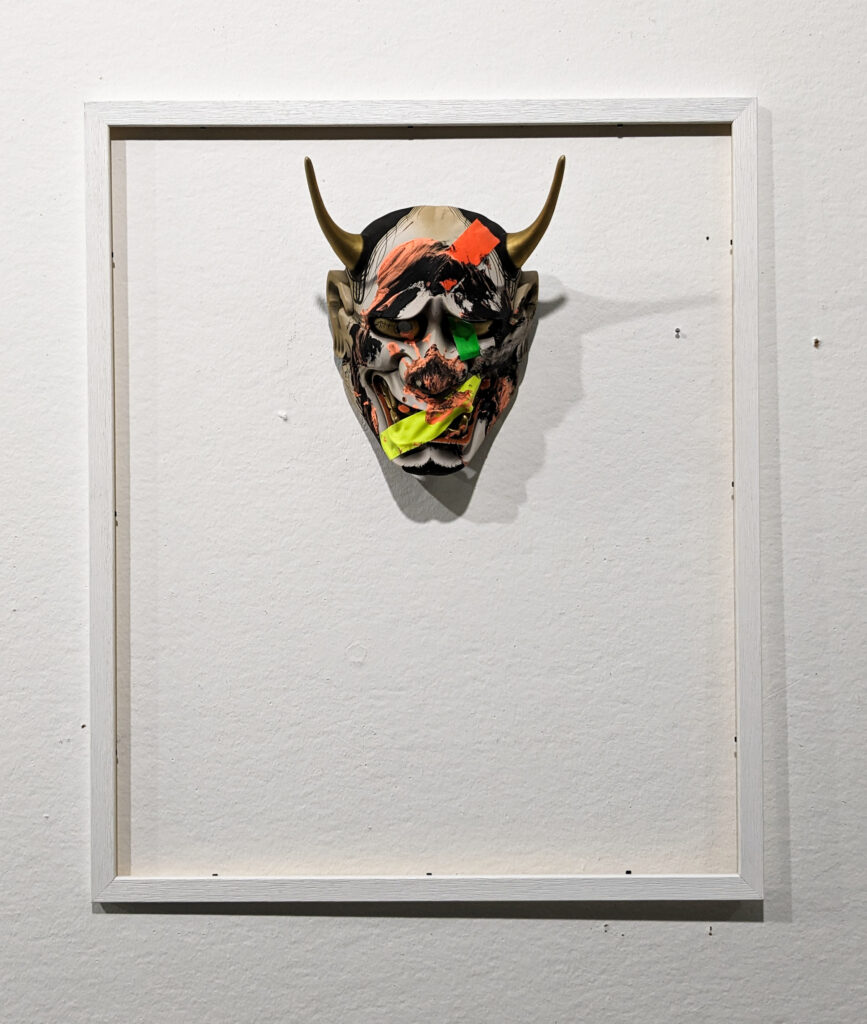
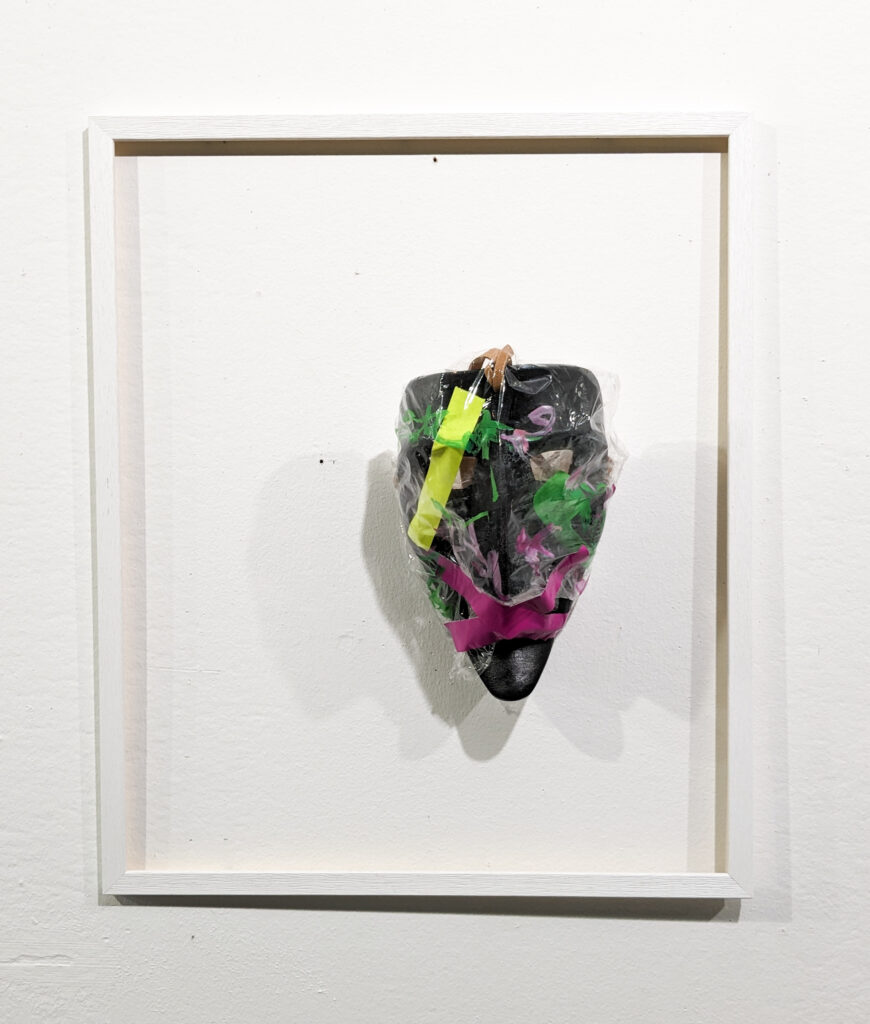
Bleibt dabei kein Residuum der alten Kultur erhalten? Ist nicht in jeder Aneignung auch immer eine Konservierung der vorangegangenen Traditionen am Werk? Procrastination / Conservatio
Ist es möglich eine kulturelle Praxis zu negieren und auszulöschen? Annihilation / Negatio
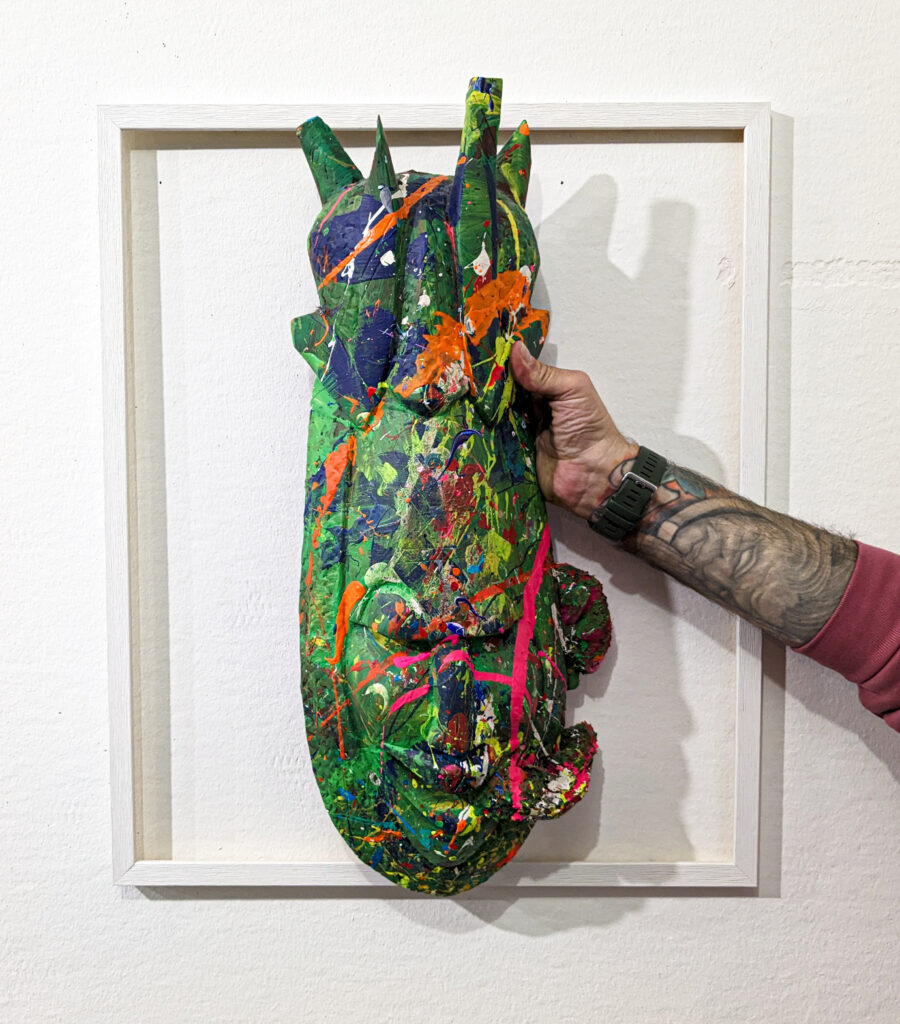
Schlussendlich: gibt es eine vollkommene Auslöschung, eine totale Aneignung, eine absolute Konservierung?
Kann als Gegenfigur eine Kultur makellos und „rein“ erhalten werden? Wohin führt uns ein derartiges Bestreben?
Das Werk versteht sich als kritische Auseinandersetzung mit der Debatte um kulturelle Aneignung. Im weiteren Kontext dreht es sich um die Fragen nach der Aufhebung von Kulturen und Traditionen im dreifachen Sinn – elevatio – conservatio – annihilatio.
Der Diskurs um die kulturelle Aneignung spielt sich fast ausschließlich in ökonomisch besser gestellten Gesellschaften ab.
Wer kommt also zu Wort? Sind es wieder nur die Eliten, deren kolonialistische Aneignung erst die Kritik ausgelöst hat? Damit verbleibt der Diskurs fast gänzlich Ausdruck einer elitären Schicht und damit oft nur an der Oberfläche, als Folie, als Maske.
Als traditionelles Artefakt werden die Masken ihrem Kontext entrissen. Ihnen haftet noch immer die Aura ihrer sozio-kulturellen Prägung, den Umständen ihrer Erschaffung und Verwendung an. Und dennoch bleibt ihre Anwendung und Umdeutung als Exponat nicht ohne Folgen. Der Künstler übernimmt hier die Rolle als kritischer Kommentator und entkommt doch nie seiner geopolitischen Stellung, seiner Einbettung in einem privilegierten Umfeld. Damit illustriert das Übermalen der Masken den anti-emanzipatorischen und oberflächlichen Aspekt der Debatte selbst.
Die Form der Maske selbst ist erhalten, ihr Inhalt wird maskiert, aber nicht zur Gänze ausgelöscht. Was bleibt ist das Spiel zwischen Oberfläche und Substanz, zwischen Aussage und Materie, zwischen Kunstwerk und Artefakt.
English Version
Cultural Approcrannihilation
Can traditions be completely adopted, appropriated and hijacked so that they are completely absorbed in their new function? Appropiation / Elevation
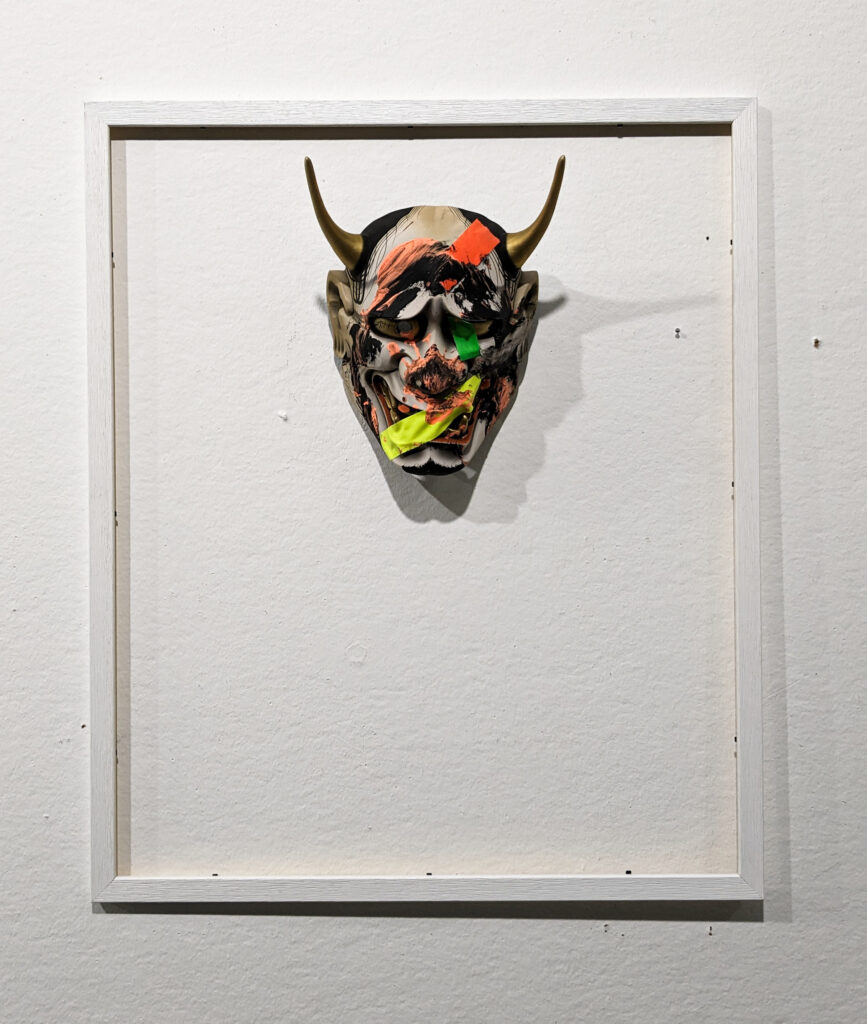
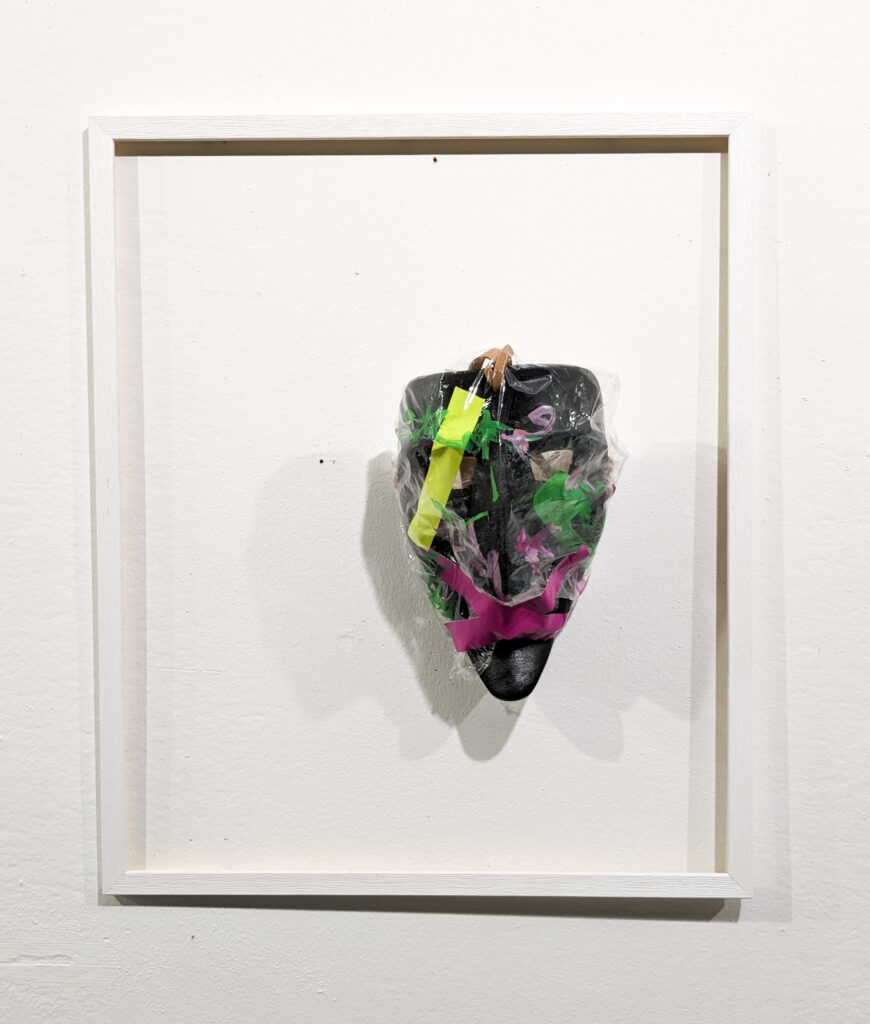
Is there not alway a residue of the old culture? Doesn’t every appropriation always involve the preservation of previous traditions? Procrastination / Conservation
Is it possible to negate and extinguish a cultural practice? Annihilation / Negation

Finally: is there a complete annihilation, a total appropriation, an absolute preservation?
Can a culture be preserved immaculate and “pure”? Where does such an endeavor lead us?
The work is intended as a critical examination of the debate on cultural appropriation. In a broader context, it evolves around the question of the abolition of cultures and traditions in a threefold sense – elevatio – conservatio – annihilatio.
The discourse on cultural appropriation takes place almost exclusively in wealthier societies.
So who is the one that speaks? Is it again only the elites whose colonialist appropriation triggered the criticism in the first place? This means that the discourse remains almost entirely the expression of an elite class and thus often only on the surface, as a foil, as a mask.
As a traditional artifact, the masks are removed from their context. They still retain the aura of their socio-cultural imprint, the circumstances of their creation and use. And yet their use and reinterpretation as an exhibit is not without consequences. The artist assumes the role of critical commentator and yet never escapes his geopolitical position, his embeddedness in a privileged environment. Painting over the masks thus illustrates the anti-emancipatory and superficial aspect of the debate itself.
The form of the mask itself remains though, its content is masked, but not completely erased. What remains is the interplay between surface and substance, between statement and matter, between artwork and artifact.
